Today’s data-driven world witnesses the immense use of data storage devices. They have become integral to this digital infrastructure as they store and manage critical, sensitive data. Explore some of the top examples of storage devices in this article.
Computers have evolved as an indispensable part of human life, offering versatility, speed, and accuracy. They perform diverse tasks with minimal human intervention. Hence, various industries rely solely on computers for certain operations. The characteristics of computer systems make it all possible.
Among all, storage is a crucial characteristic that allows you to store and access valuable information. The computer unit that stores data is called the storage unit or storage device. It holds data in different formats, such as images, videos, pdf, audio, etc.
Computers won’t be able to store, access, and safeguard data without a storage device. Hence, it is among the necessary components of computer systems.
Different types of storage devices are available. This blog post will walk you through those types and corresponding examples of storage devices.
What is a Storage Device?
A storage device is hardware that stores data for processing, either temporarily or permanently. It is also referred to as a storage unit and storage medium.
Basically, there are two major types of storage devices based on the type of computer memory – primary storage devices and secondary storage devices.
The primary memory of a computer is volatile, i.e., it stores data temporarily and loses it when the computer shuts down. Conversely, the secondary memory of a computer is non-volatile, i.e., it stores data permanently and does not lose it even if the computer crashes or fails.
Characteristics of a Storage Device
- Storage devices are readable, writable, and rewritable. Hence, changing, replacing, and deleting data according to the requirements is possible.
- They make it convenient to access data, as users do not require any challenging skill set.
- The capacity of storage devices enables computers to hold more amounts of data.
- Secondary storage devices make transferring data from one device to another easy.
- They can be easily connected and disconnected from a computer when required.
- Storage devices are compatible with all major operating systems, such as Linux, macOS, Windows, etc.
- They are compact and lightweight, making them portable.
Popular Types and Examples of Storage Devices
We will divide the below list of storage devices according to their types.
Primary Storage Devices
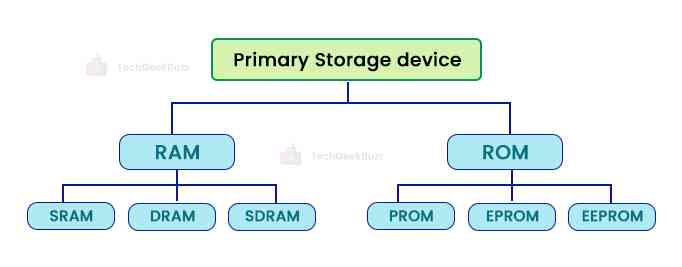
1. RAM
RAM is an acronym for Random Access Memory and is also called PC memory or simply memory. It stores data temporarily and allows a computer to access it when required quickly. It stores the operating system, application programs, and data the computer currently uses.
Compared to other storage devices, RAM is faster to read and write. The only drawback is that it loses all data it holds if the computer turns off, fails, or crashes. It is analogous to a human’s short-term memory.
SRAM, DRAM, and SDRAM are common examples of RAM.
2. ROM
Read Only Memory is the full form of ROM. It is a computer storage unit holding data permanently, unlike RAM. Hence, it is called non-volatile memory. Until a user deletes, ROM retains the data it holds. However, once you write any data to ROM, you can only read it and not change it.
ROM stores software programs or firmware that do not change or rarely change. Primarily, it stores instructions or programs required to start a computer system, i.e., BIOS (Basic Input/Output System). It provides a computer with the instructions required for initial booting and establishing interactions between the hardware and software.
MROM, PROM, EPROM, and EEPROM are examples of read-only memory.
Let us now have a look at the different types of secondary storage devices and their examples.
Magnetic Storage Devices
3. Floppy Disk
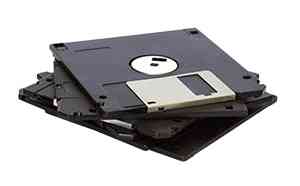
Also known as a floppy diskette, a floppy disk is a magnetic storage device used to store digital data externally. It generally consists of a thin, flexible disk enclosed in a square plastic material lined with fabric.
You can read and write data into a floppy disk when you insert it into a floppy disk drive (FDD), which is generally connected inside or to a computer system.
Floppy disks were popularly used between the 1970s through 1990s. Today, they are replaced with more effective storage devices.
4. Hard Disk
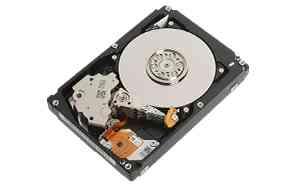
A hard disk, also known as a hard disk drive, hard drive, or fixed disk, is an electro-mechanical storage medium. It comprises multiple rapidly rotating platters covered with magnetic material. Each platter contains a magnetic head present on the moving actuator arm. This magnetic head is responsible for reading and writing data to the platter surfaces.
HDDs are non-volatile storage devices allowing you to read, write, modify, and delete data as often as possible. They are typically available in a small rectangular box. Modern computers and laptops introduce HDDs as their secondary storage units.
5. Magnetic Tape
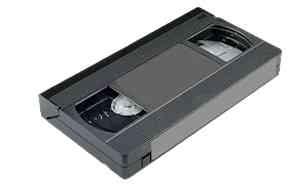
A magnetic tape is a physical storage medium to store different data types. Originally, it was used to record audio or sound. Regarding computing, a magnetic tape holds binary data. It was primarily used in larger and simple mainframe computers.
However, magnetic tapes are rarely seen with the advent of digital imaging and modern audiovisual media storage. The only application of magnetic tape in today’s digital world is tape vaulting. Professionals and technicians back up their digital data and store it in magnetic tape to keep a physical record of data and use it in case of disasters or other emergencies. Hence, it serves as a backup solution.
6. Magnetic Drum
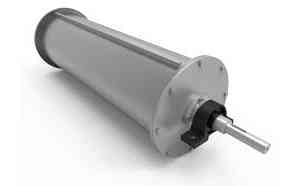
A magnetic drum is a metal cylinder with a magnetic iron-oxide material coating (ferromagnetic layer). The changing magnetic polarities of this metal cylinder store data on its surface.
As modern computers use RAM as their primary memory, some early computers used magnetic drums as the main working memory. It was even used as a secondary storage device.
Flash Memory Devices
7. Pen Drive
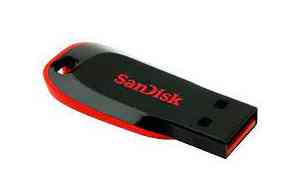
Also known as a USB flash drive, a pen drive is a storage device with flash memory integrated with a USB interface. It is used to transfer data (audio, video, images, pdf, and other data files) from one computer to another.
A pen drive is a portable, removable device smaller than an optical disc. It can be connected to a computer or laptop through a USB port. It enables quick and efficient reading and writing of data. It is available in variable capacity, ranging from 1 GB to 256 GB.
8. SDD
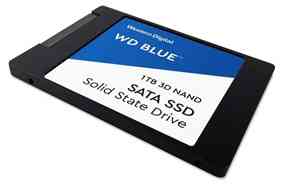
SSD stands for Solid State Drive. It is a storage device with a non-volatile flash memory. It makes the operating system’s booting process quicker and enables programs to load quickly and data to be saved faster.
An SSD functions similarly to hard disk drives and replaces them due to its significant speed. Its reads and writes are 10x faster than HDDs. It requires less power and is more lightweight. The only disadvantage is that it is expensive compared to HDDs.
Though SSDs replace HDDs, all their internal components are different. They store data on semiconductor cells. In addition, they do not have any moving parts. Hence, the name solid-state drives.
9. SD Card
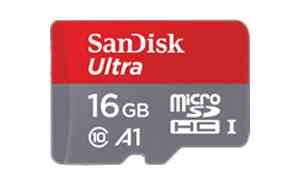
An SD card, or a secure digital card, is a tiny, non-volatile flash memory card. It resembles a small chip that fits into several portable devices, such as cellular phones, car navigation systems, smartphones, digital cameras, music players, and digital video camcorders.
SD cards have a high storage capacity. It is available based on storage capacity, such as 2 GB, 4 GB, 6 GB, etc.
10. Memory Card
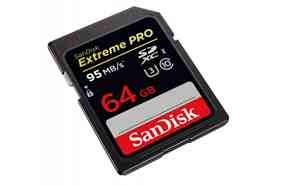
Like an SD card, a memory card also uses flash memory. It is a non-volatile storage device to store digital information. Additionally, a memory card fits well in portable devices, such as smartphones, digital cameras, video camcorders, etc., and serves as primary memory.
Your hand-held device needs a separate memory card slot to use a memory card.
Optical Storage Devices
11. CD

The CD is an acronym for Compact Disk. It is a flat, round optical storage device that contains tracks and sectors on its surface to store data. You can store and playback audio, videos, and other forms of digital data.
A standard CD is of size 4.7 inches or 120 millimeters and 1.2 mm thick. It weighs between 15 and 20 grams and has a storage capacity of 650 to 700 MB. Compact Disc read-only (CD-R) and Compact Disc Read Write (CD-RW) are two major types of CDs.
12. DVD

DVD is an abbreviation for Digital Video Disc or Digital Versatile Disc. It is also a flat, round disc with a more significant storage capacity than CDs of the same dimensions.
A standard DVD has a storage capacity of 4.7 GB, while other variants can store up to 17.08 GB of data. It is available in two types: single-layered and double-layered discs. DVD read-only (DVD-R) and DVD Read Write (DVD-RW) are two types of DVDs.
13. Blu-ray Disc
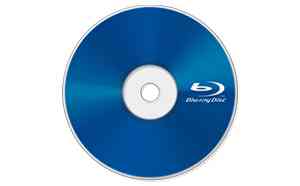
Another optical storage device is a Blu-ray disc, similar to CDs and DVDs. The only difference is the capacity of the Blu-ray disc is up to 256 GB. It is used to store, playback, and share high-resolution digital content.
Additionally, Blu-ray disc leverages the blue-violet laser to read and write data on the disc. Conversely, DVDs use a red laser. The blue-violet rays have shorter wavelengths than the red laser, which makes it possible to store large amounts of data on the same-sized disc.
14. Cloud and Virtual Storage
As technology continues to evolve, cloud storage has replaced secondary storage devices. We use Google Drive, Google Photos, Dropbox, OneDrive, and many other cloud storage services to store our data. These services store data on the cloud, a server that can be accessed remotely over the Internet. They charge depending on the capacity we use.
Conclusion
This was all about the examples of storage devices. Secondary storage devices come in handy if you run out of primary storage, such as RAM and ROM.
With digital advances and a huge generation of data, organizations and individuals are shifting to cloud storage. The most significant advantage of cloud storage is it does not store data on our local computer systems. Instead, it keeps information on distant servers so that you may access it online.
Let us know in the comments which storage device you use!
People are also reading:
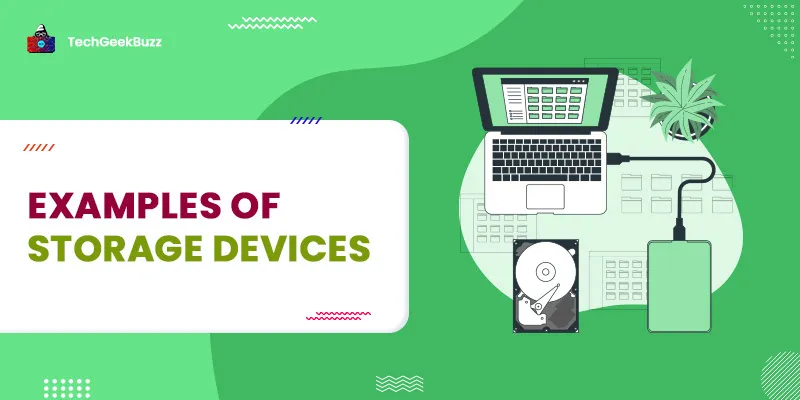

![What is an Assembler? [Definition, Working, & Types]](/media/new_post_images/What_is_Assembler.jpg)
![What is I/O? [Types, Examples, & Methods]](/media/new_post_images/What_is_I_O.webp)

Leave a Comment on this Post